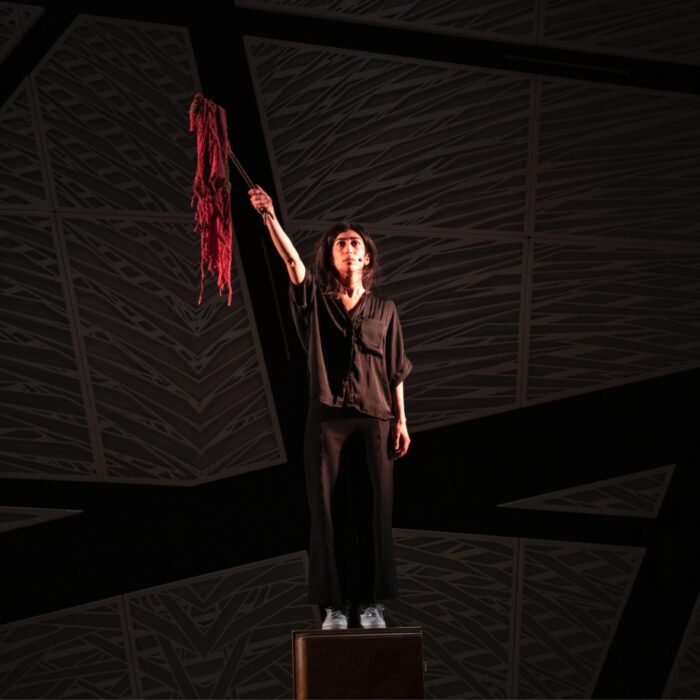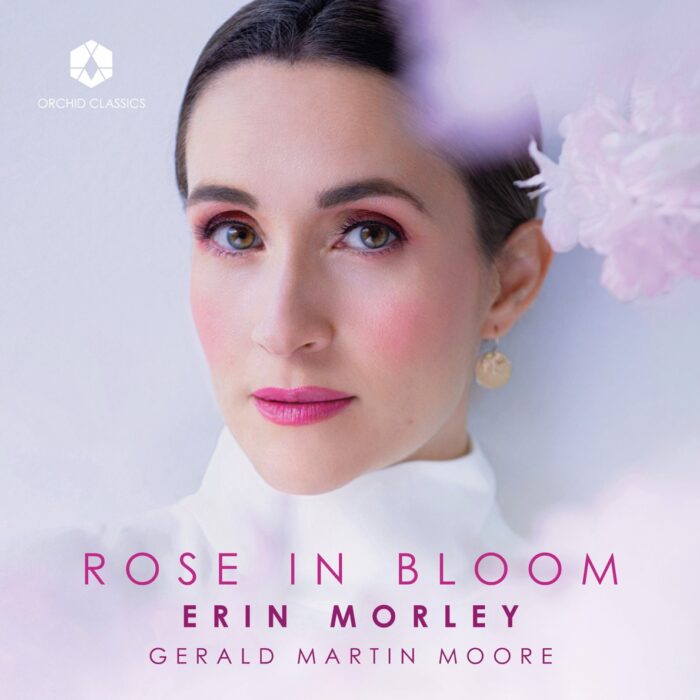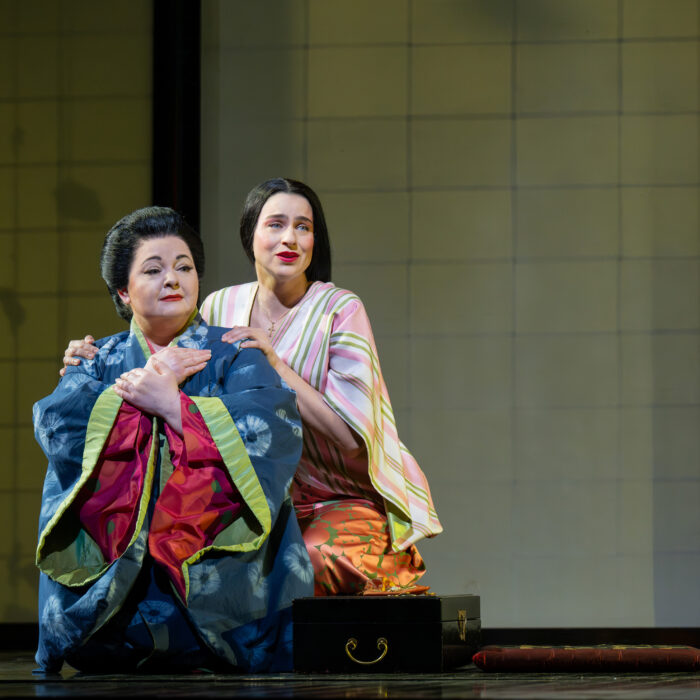
Teatro Real 2023-24 Review: Sondra Radvanovsky’s ‘The Three Queens’
Radvanovsky Triumphs in Donizetti’s Challenging Music
By Mauricio VillaOpera star Sondra Radvanovsky took the stage at the Teatro Real de Madrid to present a concert centering on the three final scenes of Donizetti’s Tudor trilogy. There’s a commercial recording on CD of a previous Chicago performance, as well as previous performances in Barcelona and Napoli.
And as she did on those occasions, on this night Radvanovsky continued to prove why she is one of the greatest artists in the opera world. She just has it all: extreme and thunderous high notes, an incredibly low chest voice, a big middle voice, a long fiato, and outstanding pianissimi. Her voice is big, metallic, and penetrating.
Since OperaWire attended this concert in 2021, the soprano has incorporated two roles to her repertoire which are famous for destroying voices because of the extreme technical demands: Turandot and Lady Macbeth. And after these roles, her voice remains fresh, elastic, and vibrant.
Anna Bolena
Radvanovsky began the performance with the final scene of “Anna Bolena.” After the overture of this piece, and the introduction chorus, she began with an exquisite mezza voce for her first line, “Piangete voi?” She delivered the first strong high C of the night in “infiorato” just at the sixth bar, when she had barely sung two lines with no chance to warm up the voice on the stage. She followed the recitative with a lamenting and sorrowful attitude, and then she drastically changed to strong dramatic singing for “Chi parlò di Percy?” Her G in “Ah! Mi perdona” was thunderous and penetrating. It’s remarkable how she managed to change the colors of her voice to portray the agitated mental state of the character. And as if she had few high notes still to sing she interpolated an extra high C in “Oh goija!”
Her interpretation of the aria “Al dolce guidami!” was moving, full of sorrow and misery. She held her big sound and sang the whole piece with a soaring mezza voce, navigating easily through the long legato lines and singing clean roulades. She sang an incredible A natural crescendo in “del nostro amor!” She managed to attack a high B natural straight in mezza voce, and then raised to high C with her crystalline pianissimi before resolving the cadenza down. What was astonishing was Radvanovsky’s ability to lighten the sound and color the timbre. There was also so much flexibility as she ascended into the higher register.
She continued the next recitative with the same contrast of color and intentions, portraying dramatically the agitated state of a woman who is going to be executed, singing the section “Cielo, a’miei lunghi” with her soaring mezza voce and long fiatos. Returning to the dramatic vocal qualities, she interpolated a high B flat followed and descended to a thunderous low B flat on “cessate” and sang an extra high C in “versato” before jumping into one of the hardest cabalettas Donizetti ever wrote. “Coppia Inquia!” is known for the extreme tessitura which goes from low E flat to high C and has numerous trills and the fast scales. Her interpretation of the cabaletta “Coppia iniqua!” was a showcase of vocal pyrotechnics, fast scales, and above all, rage and drama. It’s incredible how strong her G above the stave is, and how easy she can ascend to A flat, B flat, and high C. She introduced her own variations on the second repetition, singing a low D in the chest voice and rising to a high B flat. She also added an extra high C. She concluded the piece by holding a long crescendo on a high B flat and resolving down to an E flat.
Maria Stuarda
The concert continued with the final scene of “Maria Stuarda.” Stuarda is written lower for the soprano and as a result, the music is mostly written in the middle range, and it’s full of long expansive melodies.
Nevertheless, the piece has several ascensions to B naturals and Radvanovsky interpolated a final thunderous high D. She sang with deep pathos, assuming her death sentence and a deeply moving “preggiera.” She held, as written, a high G for nine bars. This was about twenty seconds with the required slow tempi that Frizza marked, in a soaring pianissimo which ended in a crescendo and a chromatic ascension to B flat, all done in a single breath. Her sound was light, younger, and somehow kept an atmosphere of forgiveness and acceptance. It was astonishing to see how Radvanovsky could switch from the dramatic “Anna Bolena” to the more sensitive music of “Maria Stuarda.”
Roberto Devereux
The concert concluded with the final scene from “Roberto Devereux,” which was by far the highlight of her performance.
Her vocal characterization and portrayal of the old queen was mesmerizing as she entered the stage limping and using a walking stick. But her voice sounded different too, it had some dryness and was more metallic than in Stuarda. Her recitative “E sara…!” was sung with doubt and fear, strong in the middle register alternating with a mezza voce. She delivered another A natural in pianissimo during “Oh Sara!” before singing another strong B natural and A natural in “idea funesta.” The way she sang “arresta!” was hair-raising because of the dramatism that she imprinted in the last note. Her aria “Vivi ingrato” was composed again with long expansive melodies and Radvanovsky used all her vocal and acting resources to portray the character. The structure of “Roberto Devereux” is similar to Anna Bolena following the strict rules of Bel canto: recitative, slow expansive aria, recitative-bridge, and an explosive cabaletta. But Radvanovsky made it sound so different. She delivered again one of her amazing B naturals in crystalline pianissimo and included in her final cadenza a terrifying low A natural that emphasized her strong chest voice.
The cabaletta “Quel sangue Versato” is difficult as the writing goes from a low C sharp to a high B natural, and demands flexibility for the quick roulades. But Radvanovsky’s voice sounded fresh, her high notes, including the final high D, were ringing and secure, and her coloratura was immaculate. She made no variations on the repetition of the cabaletta as she focused on the tension and drama of the scene.
The concert was semi-staged and one might never understand the reasoning for this. In my opinion, you should either do a proper staging or present a concert, but not something in between. There were a few interventions from soloists and quite a strong choral presence.
Riccardo Frizza was conducting the orchestra of Teatro Real, and you could see that he was following Radvanovsky, breathing with her, measuring the tempi. But all the focus and attention went to the soprano, even when she was not singing. Her performances were hypnotic.
Categories
Reviews

